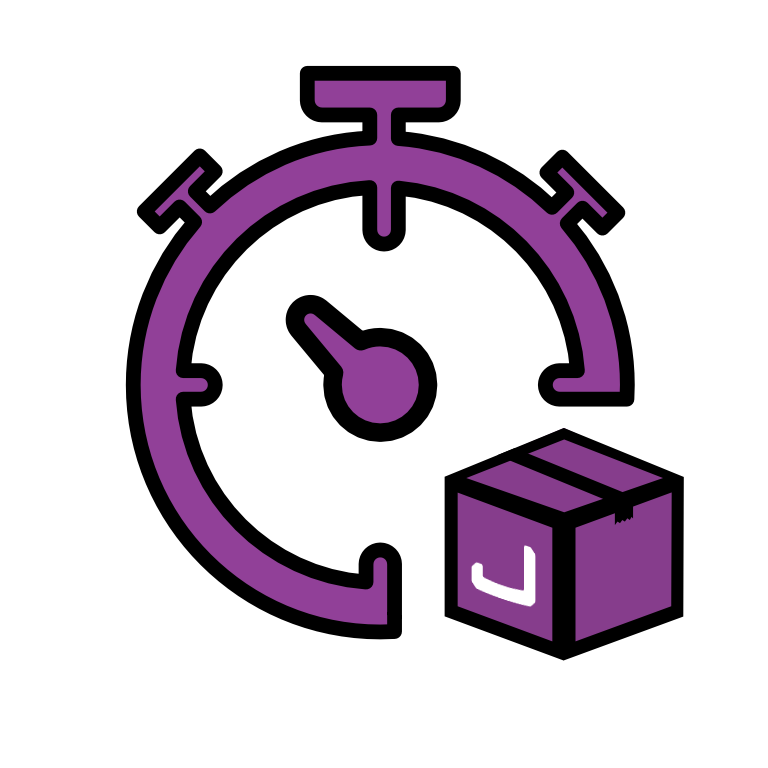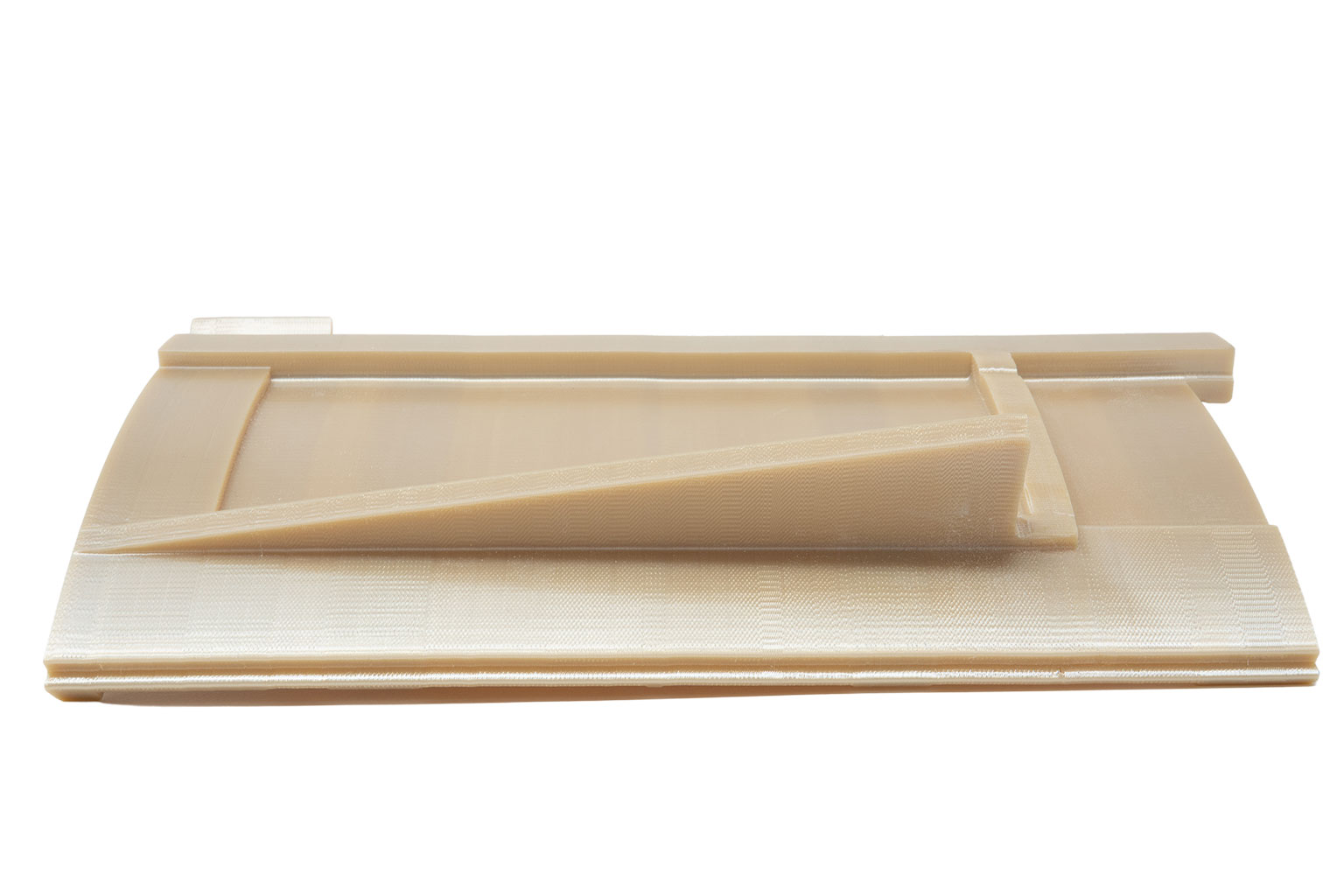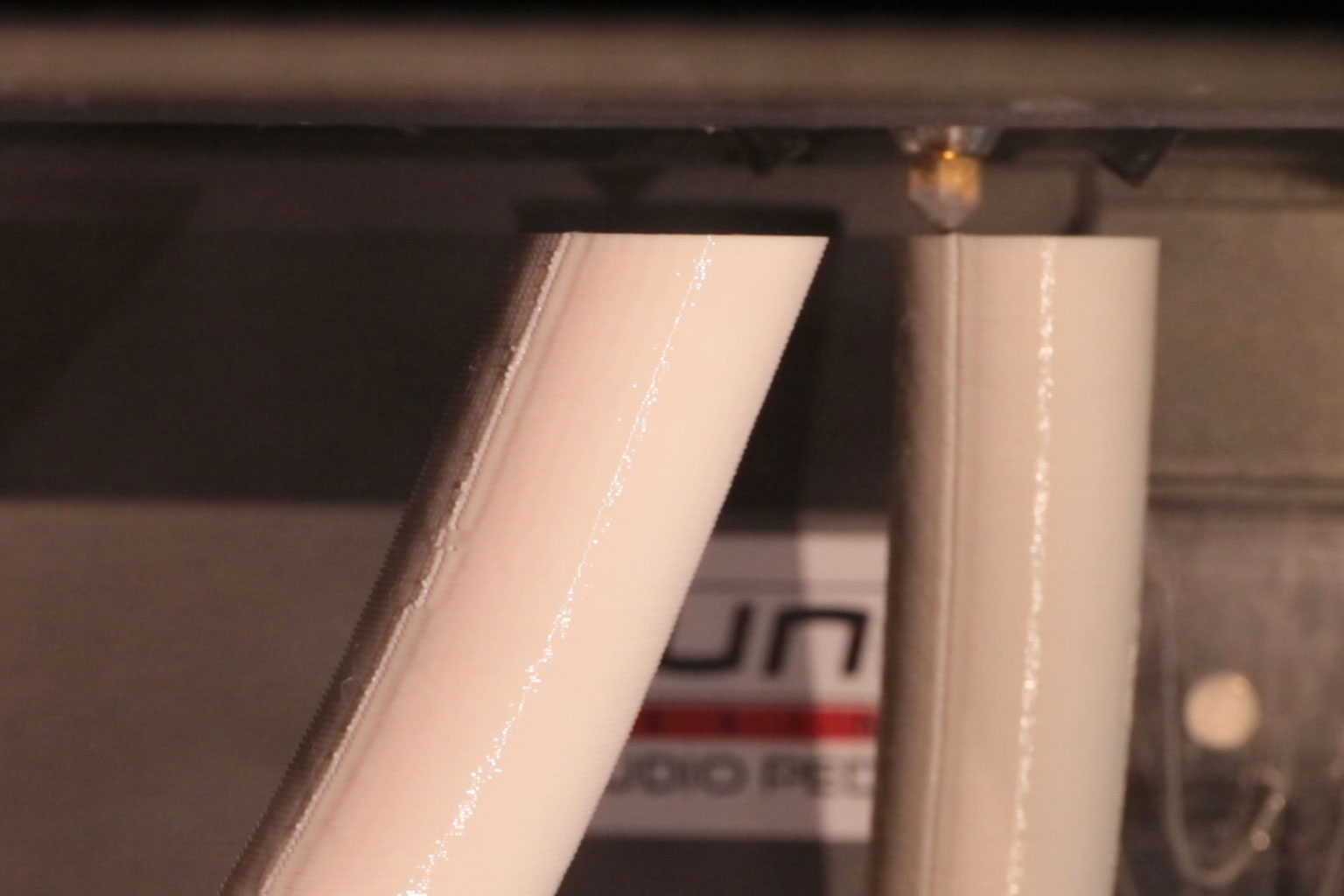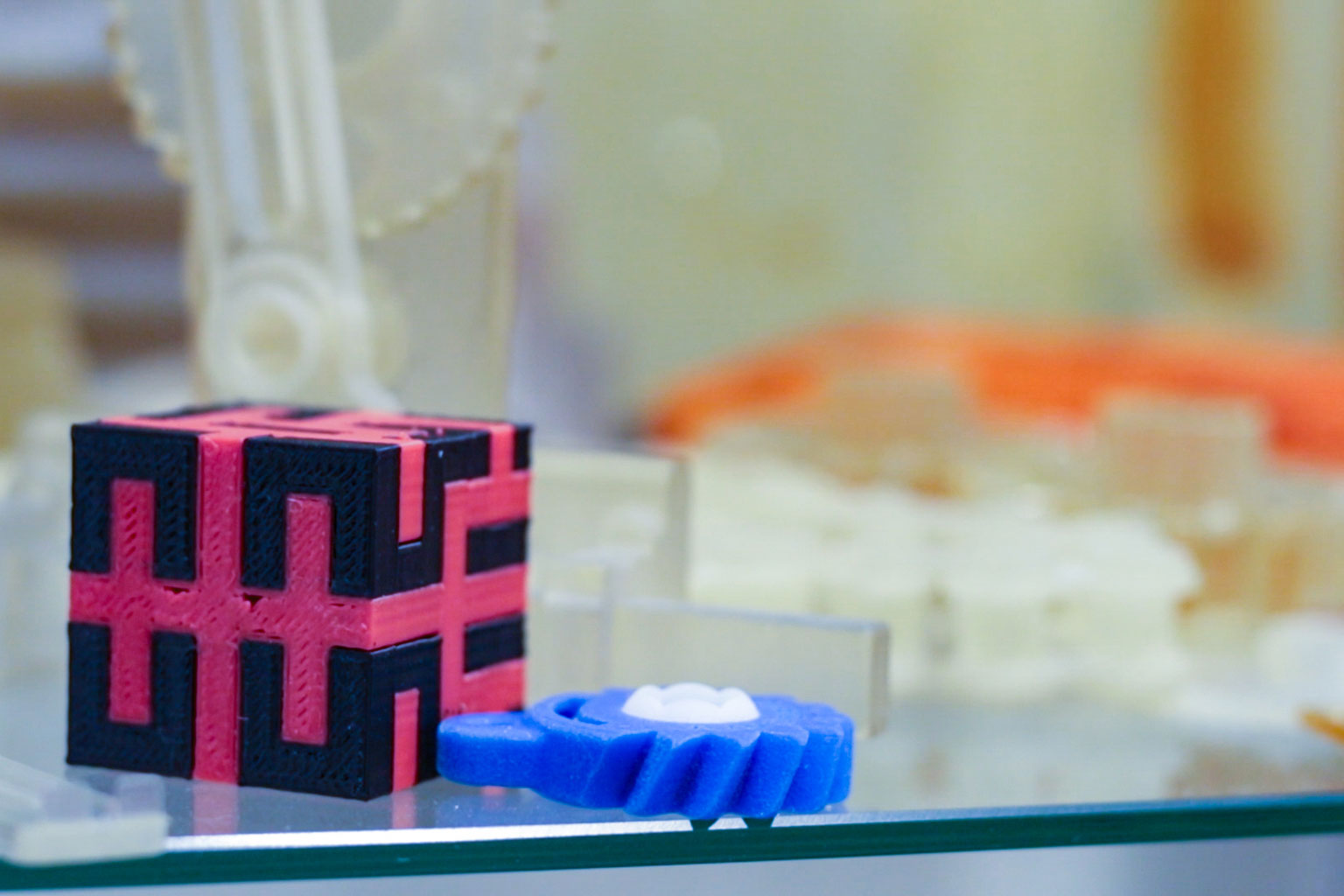
Extrusion of
thermopolymers
Conceptual prototypes
High-performance functional elements.
Technical Data
| Materials | PLA | TOUGH | PETG | ASA | ABS | PC |
|---|---|---|---|---|---|---|
| Tensile strenght MPa Metodo ASTM D638 |
62 | 35 | 44 | 49 | 31-26 (Ultimate) |
57.3 |
| Elogation at break % Metodo ASTM D638 |
>4.4 | >52.7 | >3.8 | >6 | >7-2 | 5.2 |
| Modulus of elasticity MPa Metodo ASTM D638 |
3600 | 2800 | 1900 | 2100 | 2230 (XZ) 2180 (ZX) |
2250 |
| Flexural Modulus MPa Metodo ASTM D790 |
2600 | 2600 | 2000 | 2300 | 2060 (XZ) 1760 (ZX) |
N.A |
| Notched Impact Strenght J/m Metodo ASTM D256 |
32 | 220 | 18.7 | 140 | 128-300 | 76.8 |
| Heat Deflection Temp. °C 0,45 MPa Metodo ASTM D648 |
52-49 | 53-49 | 70 | 96 | 82 | 142 |
| Materials | PC-ABS FR | NYLON | NYLON 6 C.F. | NYLON 12 C.F. | ULTEM 1010 | ULTEM 9085 |
|---|---|---|---|---|---|---|
| Tensile strenght MPa Metodo ASTM D638 |
60 (ISO 527) |
66 | 110 | 66 | 81-37 (Ultimate) |
69-42 (Ultimate) |
| Elogation at break % Metodo ASTM D638 |
>50 (ISO 527) |
>10 | N.A. | N.A. | 3.3 - 2.0 | 5.8 - 2.2 |
| Modulus of elasticity MPa Metodo ASTM D638 |
2850 (ISO 527) |
2200 | 7600 | 6000 | 2770 (XZ) 2200 (ZX) |
2150 (XZ) 2270 (ZX) |
| Flexural Modulus MPa Metodo ASTM D790 |
N.A. | 1700 | N.A. | N.A. | 2820 (XZ) 2230 (ZX) |
2300 (XZ) 2050 (ZX) |
| Notched Impact Strenght J/m Metodo ASTM D256 |
N.A. | 187 | N.A. | N.A. | 41-24 | 120-48 |
| Heat Deflection Temp. °C 0,45 MPa Metodo ASTM D648 |
N.A. | 91 | 184 | 154 | 216 | 153 |
| Impact Strenght Charpy methos 23°C ISO 179 (kJ/m2) |
42.5 | N.A. | N.A. | N.A. | N.A. | N.A. |
| Vicat Softening Temp ISO 306 |
104 | N.A. | N.A. | N.A. | N.A. | N.A. |
| Flammability Rating UL94 |
V0 | N.A. | N.A. | N.A. | V0 | V0 |
| Glass Transition Temp. (Tg °C) | N.A. | N.A. | N.A. | N.A. | 209 | 177 |
| Bio Compatibility Certification USP CLass |
N.A. | N.A. | N.A. | N.A. | VI | VI |







